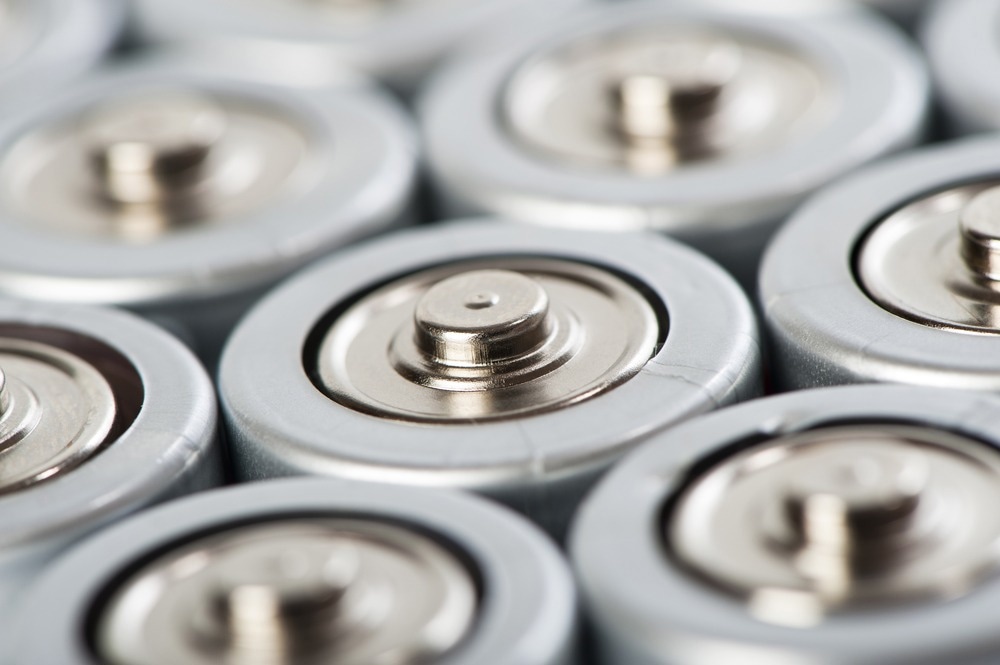Aqueous zinc-ion batteries (AZIBs) have recently attracted significant interest as next-generation power storage devices. However, the practical applications of aqueous zinc-ion batteries are significantly hampered due to their inherent drawbacks, such as the uncontrollable creation of the zinc dendrites and severe side reactions.

Study: Copper Nanoparticle-Modified Carbon Nanofiber for Seeded Zinc Deposition Enables Stable Zn Metal Anode. Image Credit: art nick/Shutterstock.com
A recent study published in the journal ACS Sustainable Chemistry & Engineering addresses this problem by constructing a reliable zinc anode from an adaptable protective layer made of conductive carbon nanofibers modified by zincophilic materials of copper nanoparticles.
Aqueous Zinc-ion Batteries (AZIBs): Overview and Challenges
Batteries and other power storage systems have been extensively utilized for many industrial applications in the last decade. Aqueous zinc ion batteries (AZIBs) made of zincophilic materials are regarded as an intriguing energy storage technology.
However, zinc dendrites, the hydrogen transformation reaction, and the high oxidation potential of zinc anodes impede the practical applications of AZIBs. The electrocatalytic activity of zinc metal anodes made of suitable zincophilic materials can be enhanced through several techniques. These include the design of three-dimensional structures, synthetic interface layers, and electrolyte engineering.
Comparable to the electrode surface of a lithium anode, a surface protective layer on a zinc anode can help protect the electrode of aqueous zinc-ion batteries by lowering the interfacial interaction between the electrode and electrolyte, hindering zinc oxidation, and directing uniform deposition of zinc ions.
Carbon Nanofibers for Performance Enhancement of AZIBs
The currently reported coating layers for zinc anodes can be divided into four categories, namely metal-organic frameworks, inorganic coating layers, polymer coatings, and carbon-based components like carbon nanofibers.
Carbon nanofibers can uniformly disperse the charges and regulate the zinc anodes in AZIBs because of their excellent chemical stability, high electrical conductivity, and large specific surface area (SSAs). Zinc ions in AZIBs tend to be placed on materials with the same crystal lattice during the preliminary nucleation phase.
However, the low-lattice-mismatch functionality makes it very difficult for zinc ions to crystalize homogeneously on the surface of carbon nanofibers, inevitably leading to the creation of dendrites.
Many earlier studies have successfully shown that zincophilic materials such as copper nanoparticles can be used to modify carbon nanofibers for uniform deposition of metallic ions onto zinc anodes. Therefore, using carbon nanofibers with highly distributed zincophilic materials of copper nanoparticles is a viable route to prevent the growth of zinc dendrites in AZIBs.
Highlights of the Current Study
In this study, the researchers created adaptable carbon nanofibers modified with copper nanoparticles as a protective coating layer to regulate zinc anodes using a straightforward electrospinning technique. Copper nanoparticles were used as suitable zincophilic materials in this work due to their remarkable crystallinity.
Along with lowering the local current densities, the porous coating layer of carbon nanofibers with a high specific surface area (SSA) can also transform the dispersion of electromagnetic fields.
The crystalline structure of the carbon nanofibers was evaluated using a cutting-edge X-ray diffraction meter. The surface properties of the materials were evaluated using X-ray photoelectron spectroscopy. The absorption bands were located using a Raman spectroscope and a Fourier transform infrared spectrometer. A scanning electron microscope (SEM) was used to analyze the surface morphology and element dispersion of carbon nanofibers and copper nanoparticles.
Important Findings of the Research
The creation of zinc dendrites was successfully inhibited by a protective coating layer of carbon nanofibers modified with copper nanoparticles. This can be credited to extremely fine copper nanoparticles and the substantial SSAs of carbon nanofibers providing a declining local power density and an expanding nucleation location for zinc ions.
Moreover, the density functional theory (DFT) calculations revealed that the zincophilic materials of copper nanoparticles had a notable adsorption efficiency for zinc ions, stabilizing the zinc anodes of AZIBs.
Based on these findings, it is safe to conclude that the coating layer made of carbon nanofibers and modified with copper nanoparticles developed in this study can be of great guiding importance in improving the stability of the zinc anode and promoting the real-world applications of AZIBs.
Reference
Yang, S. et al. (2022). Copper Nanoparticle-Modified Carbon Nanofiber for Seeded Zinc Deposition Enables Stable Zn Metal Anode. ACS Sustainable Chemistry & Engineering. Available at: https://pubs.acs.org/doi/10.1021/acssuschemeng.2c03328
Disclaimer: The views expressed here are those of the author expressed in their private capacity and do not necessarily represent the views of AZoM.com Limited T/A AZoNetwork the owner and operator of this website. This disclaimer forms part of the Terms and conditions of use of this website.